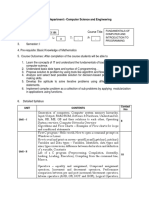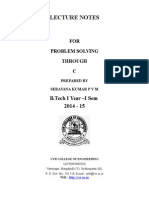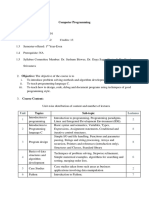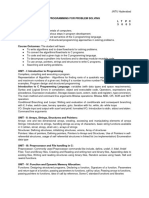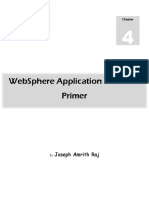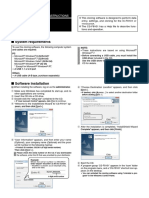0% found this document useful (0 votes)
66 views2 pagesSCS101 Revision Notes and Questions
The document outlines the syllabus and key topics for an introductory computer programming course (SCS101), covering programming principles, the program development cycle, algorithm development, C programming basics, control structures, functions, data structures, and program documentation. It includes a question bank divided into four portions for exam preparation, focusing on concepts such as compilers vs interpreters, flowcharts, control structures, and pointers. Practical problem-solving and the importance of documentation are emphasized throughout the course content.
Uploaded by
cpine0223Copyright
© © All Rights Reserved
We take content rights seriously. If you suspect this is your content, claim it here.
Available Formats
Download as PDF, TXT or read online on Scribd
0% found this document useful (0 votes)
66 views2 pagesSCS101 Revision Notes and Questions
The document outlines the syllabus and key topics for an introductory computer programming course (SCS101), covering programming principles, the program development cycle, algorithm development, C programming basics, control structures, functions, data structures, and program documentation. It includes a question bank divided into four portions for exam preparation, focusing on concepts such as compilers vs interpreters, flowcharts, control structures, and pointers. Practical problem-solving and the importance of documentation are emphasized throughout the course content.
Uploaded by
cpine0223Copyright
© © All Rights Reserved
We take content rights seriously. If you suspect this is your content, claim it here.
Available Formats
Download as PDF, TXT or read online on Scribd
/ 2





























